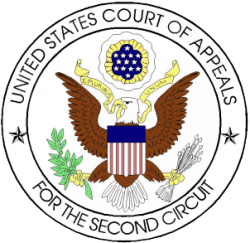 The U.S. Court of Appeals for the Second Circuit recently rejected claims by borrowers who failed to maintain hazard insurance on their mortgaged properties that they were overcharged by their loan servicer for lender-placed insurance, holding the claims were barred by the filed rate doctrine.
The U.S. Court of Appeals for the Second Circuit recently rejected claims by borrowers who failed to maintain hazard insurance on their mortgaged properties that they were overcharged by their loan servicer for lender-placed insurance, holding the claims were barred by the filed rate doctrine.
A copy of the opinion is available at: Link to Opinion.
The plaintiffs, borrowers who failed to purchase hazard insurance on their homes as required by the terms of their loans, sued their loan servicer, who purchased lender-placed insurance (LPI) from defendant insurers at rates approved by the applicable regulatory agencies, then sought to collect the cost of the LPI from the borrowers.
The plaintiff alleged that they were overcharged because of an alleged kickback and rebate scheme between the servicer, insurer and its affiliated management company, which supposedly violated the Racketeer Influenced and Corrupt Organizations Act (RICO) and the Real Estate Settlement Procedures Act (RESPA).
All of the defendants settled except the insurer and management company. These defendants moved to dismiss, arguing that the filed rate doctrine barred the plaintiffs’ claims.
The district court denied the motion in part, reasoning that although the insurer had received approval for the LPI rates it charged to the servicer, that approval did not extend to the borrowers’ reimbursement of the servicer for the LPI. Due to a conflict among the courts on the issue, the district court certified its decision for interlocutory appeal.
On appeal, the Second Circuit described the alleged scheme as consisting of an agreement by the servicer to buy LPI exclusively from the insurer and, in return, the insurer would provide the servicer with loan tracking services through its affiliated management company. The plaintiffs characterized the management company’s services, which included identifying borrowers who had defaulted on their duty to maintain hazard insurance, “as, in effect, a discount on LPI from the filed rates approved by regulators.” This was supposedly wrongful because the servicer billed the plaintiff borrowers for the full filed rates, while supposedly retaining the benefit of the “discount” for itself.
The Second Circuit explained that pursuant to the filed rate doctrine, “any ‘filed rate’—that is, one approved by the governing regulatory agency—is per reasonable and unassailable in judicial proceedings brought by ratepayers.” The rationale for the doctrine is that: 1) courts are ill-equipped to second-guess regulators as to approved rates, also known as the “nonjusticiability” prong or principle; and 2) litigation should not be used as a means for some ratepayers to gain preferential rates, known as the “nondiscrimination” principle. The doctrine applies to both federal and state causes of action and protects rates approved by federal or state agencies.
Noting that there was no dispute that the LPI rates at issue were filed with regulators and that the plaintiffs were billed for those same rates by the servicer, the Court analyzed whether the plaintiffs’ claims would violate either prong of the filed rate doctrine test.
Citing its own precedent, the Second Circuit noted that the nonjusticiability principle doesn’t just prevent judicial rate-setting, but also “precludes any judicial action which undermines agency rate-making authority” and, accordingly, “a claim may be barred even if it can be characterized as challenging something other than the rate itself.”
The Court reasoned that allowing plaintiffs’ claims would undermine the rate-making authority of the state insurance regulators who approved the insurer’s LPI rates, rejecting the plaintiffs’ theory that they were overbilled when they were charged the full LPI rates instead of lower rates reflecting the value of the management company’s loan tracking services, concluding that the plaintiffs’ claims were barred, because under the nonjusticiability principle, “whether insurer-provided services should have been reflected in the calculation of LPI” is a question reserved for the regulators, not the courts.
Likewise, the Second Circuit reasoned that the plaintiffs’ claims failed to pass muster under the nondiscrimination prong because it, like nonjusticiability, applies to claims that purport to seek relief other than a lower rate, and any damages recovered by plaintiffs would, in essence, constitute a rebate, giving them preference over other borrowers who were charged the full LPI filed rate. The Court pointed out that this problem of preferential discrimination was not overcome because the plaintiffs sued on behalf of a putative class.
The Second Circuit specifically noted that it disagreed with the district court’s conclusion that the filed rate doctrine did not apply at all because it applies only when an insurer deals directly with the ratepayer, not when the insurer bills the lender, who in turn bills the borrower.
The Court concluded that the “filed rate doctrine is not limited to transactions in which the ratepayer deals directly with the rate filer. The doctrine operates notwithstanding an intermediary that passes along the rate,” reversing and remanding with directions to dismiss the case.


